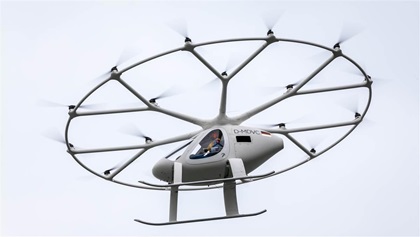Volocopter on a roll
Flight test campaign in Tampa
On November 2, Volocopter kicked off a test campaign—a series of flights to gather data on aircraft performance—at Tampa International Airport in Florida.
In front of an audience of media representatives, partners, and guests including state and local officials, a crewed Volocopter 2X (a pre-series model of VoloCity, mainly used for testing purposes) made what the company billed as the first flight test of an electric vertical takeoff and landing (eVTOL) aircraft at an active international airport in the United States. The test plan called for assessing aircraft downwash and outwash, all in front of an audience—invitations that were part of the company's strategy to build public support.

Volocopter GbmH, a German-based aircraft manufacturer, is building three types of eVTOLs: air taxis, cargo drones, and longer-range passenger aircraft, trying to bring urban air mobility to cities around the world. The company argues that eVTOLs—the new generation of aircraft being built as the backbone of urban air mobility—are better suited to a city environment because they’re less noisy, reduce automobile congestion, and contribute to achieving “decarbonization of the aviation industry.“
The Volocopter 2X has a very distinct design, based on European Class 6 microlight helicopter rules. It’s driven by 18 fixed-pitch rotors, each powered by its own electric motor, and is configured to seat two people side by side. The Volocopter lands on skids. It has flown in Las Vegas; Oshkosh, Wisconsin; and the Dallas-Fort Worth area.
Volocopter recently announced that it is partnering with Bristow Group, a company with a long history in offshore petroleum operations off the southern coast of Alaska, and provider of helicopter transportation, search and rescue, and aircraft support solutions, to begin operations of eVTOLs in Florida.
Dirk Hoke, chief executive officer of Volocopter, said, “Volocopter sees this as a starting point of the entry into service in the U.S., and we will come back to show our continued progress. We thank all attending guests for the support given to make this first-ever eVTOL flight in Florida a success.”
Final certification of the VoloCity, Volocopter’s commercial eVTOL, from the European Union Aviation Safety Agency is expected in 2024. The company is also in a "validation process" with the FAA.
Volocopter plans to launch its commercial air taxi service in the summer of 2024 in Paris, during the Olympic Games, a company spokesperson confirmed in an email.



